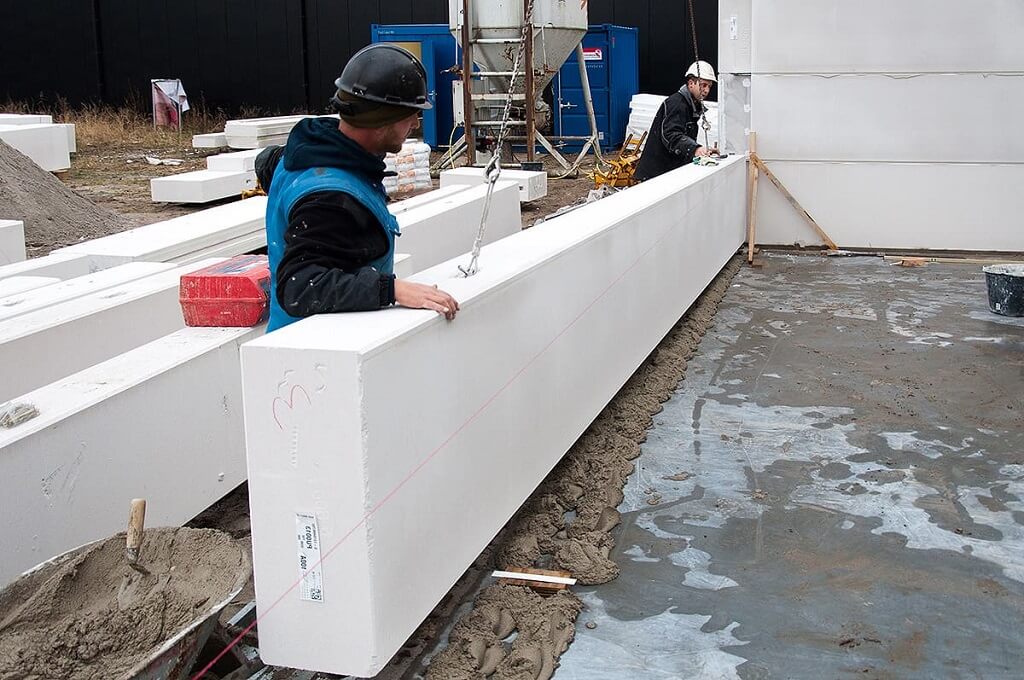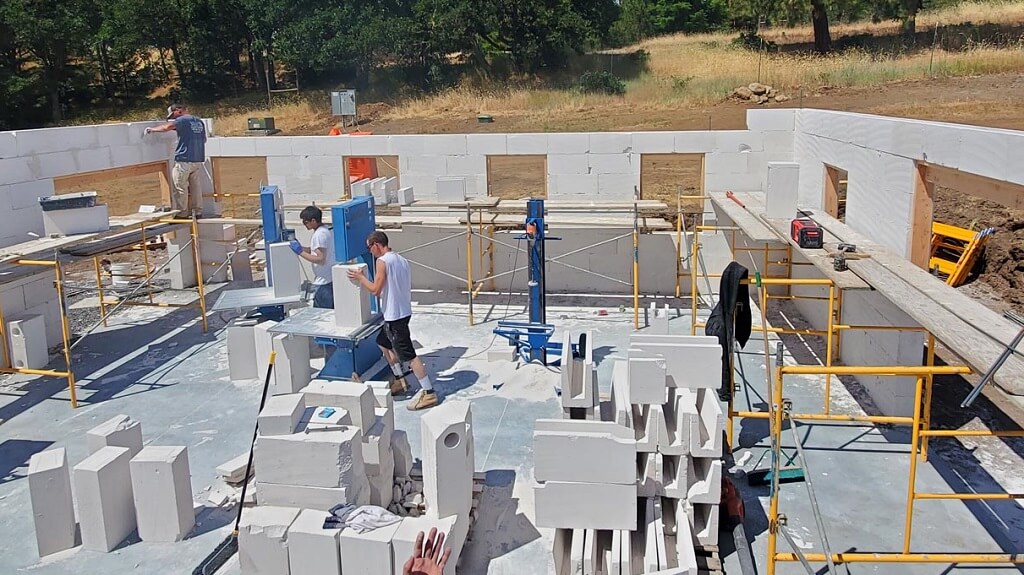In the realm of construction, progress has consistently been fueled by the driving force of innovation. One such groundbreaking innovation that has gained widespread recognition in recent years is the use of AAC (Autoclaved Aerated Concrete) blocks. AAC blocks have transformed the construction industry by offering a lightweight, eco-friendly, and cost-effective alternative to traditional building materials.
In this article, we will explore the benefits and applications of AAC blocks, shedding light on why they have become a popular choice for construction projects worldwide.
What are AAC Blocks?
AAC blocks are prefabricated, airy concrete blocks crafted from a blend of sand, cement, lime, and aluminum powder. The enchantment unfolds during the production process as the concoction undergoes expansion, triggered by the liberation of hydrogen gas. This expansion creates countless tiny air pockets within the blocks, making them lightweight and highly insulating. The outcome is a product that possesses impressive strength while being lighter than conventional concrete blocks.
Benefits of AAC Blocks
- Lightweight: A noteworthy feature of AAC blocks is their reduced density, resulting in a significantly lighter weight compared to conventional concrete blocks. This quality simplifies their handling, transportation, and installation, resulting in accelerated construction processes and diminished structural stress on buildings.
- Thermal Insulation: AAC blocks have exceptional thermal insulation properties, making them an ideal choice for both hot and cold climates. The air pockets within the blocks act as insulators, helping to maintain a comfortable indoor temperature while reducing energy consumption.
- Sound Insulation: Apart from their thermal insulation properties, AAC blocks also offer outstanding sound insulation. They effectively dampen external noises, creating a quieter and more peaceful indoor environment, which is crucial for residential and commercial buildings.
- Eco-Friendly: AAC blocks are environmentally friendly due to their minimal use of raw materials and energy-efficient manufacturing process. Furthermore, their excellent insulation properties reduce the energy consumption of buildings, thus lowering carbon emissions.
- Fire-Resistant: AAC blocks exhibit exceptional fire resistance, boasting an impressive fire rating. This attribute renders them the favored selection for constructing edifices where prioritizing fire safety is paramount, including schools, hospitals, and residential buildings.
- Easy to Work With: AAC blocks are crafted with simplicity and precision in mind, offering versatility in terms of size and shape. This flexibility empowers architects and builders to fashion distinctive and one-of-a-kind designs. Furthermore, AAC blocks can be effortlessly tailored, perforated, and molded, rendering them ideal for an extensive array of construction ventures.

Applications of AAC Blocks for Construction
The versatility and numerous benefits of AAC blocks have led to their widespread adoption in various construction applications. Here are some of the key areas where AAC blocks have proven to be invaluable:
- Residential Buildings: AAC blocks are commonly used in the construction of homes and apartments. Due to their exceptional insulation characteristics and fire-resistant qualities, they are a superb option for crafting cozy, secure, and energy-efficient residential environments.
- Commercial Buildings: AAC blocks are an ideal choice for constructing commercial buildings like offices, shopping centers, and hotels. AAC blocks offer effective sound insulation, creating a favorable setting for both work and leisure activities.
- Industrial Buildings: In the realm of industrial construction, robust materials capable of enduring substantial loads and challenging environmental conditions are a necessity. AAC blocks, with their remarkable blend of strength and longevity, prove to be an ideal choice for such demanding applications.
- Educational Institutions: Schools and universities benefit from AAC blocks’ fire-resistant properties and sound insulation, creating a conducive learning environment. Moreover, AAC’s eco-friendly nature aligns with educational institutions’ commitment to sustainability.
- Healthcare Facilities: Hospitals and healthcare institutions demand outstanding fire resistance, thermal insulation, and soundproofing to guarantee the well-being of patients. AAC blocks meet these requirements and contribute to the overall safety and comfort of healthcare buildings.
- Infrastructure Projects: AAC blocks are also employed in infrastructure projects like bridges and tunnels due to their lightweight nature and durability, reducing the load on supporting structures and ensuring longevity.
- Renovations and Retrofits: AAC blocks are not limited to new constructions; they are also an excellent choice for renovation and retrofit projects. Their lightweight properties make them an attractive option for updating older structures while improving energy efficiency.
Challenges and Considerations
While AAC blocks offer numerous benefits, there are some considerations and challenges to keep in mind when using them in construction:
- Cost: The initial cost of AAC blocks can be slightly higher than traditional bricks or concrete blocks. Nonetheless, the enduring savings resulting from decreased energy usage and reduced maintenance expenses frequently surpass the initial capital outlay.
- Specialized Skills: Working with AAC blocks may require specialized skills and tools, which can be a challenge for builders who are not familiar with the material.
- Moisture Control: Proper moisture control during construction and maintenance is crucial, as excessive moisture can weaken the blocks over time.
Conclusion
The exceptional thermal and sound insulation capabilities, fire resistance, and eco-friendly nature of AAC blocks have established them as a favored option for various construction purposes. While there are some initial challenges to consider, the long-term benefits of AAC blocks make them an excellent investment in the future of construction. With the increasing emphasis on sustainable construction methods, AAC blocks are positioned to have a significant impact on the architecture of the future.

